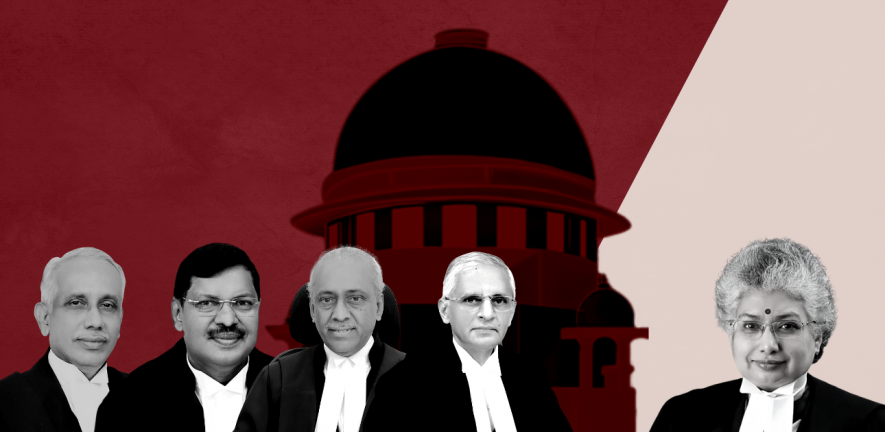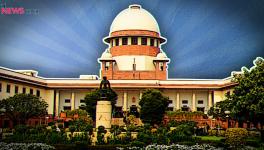Dissecting the Majority and Minority Opinions in the Demonetisation Judgment

The majority judgment, authored by Justice Gavai, and the dissenting judgment, authored by Justice Nagarathna, differ primarily on the interpretation of Section 26(2) of the RBI Act. The former holds that the Union Government’s exercise of power to implement demonetisation under the provision was valid, whereas the latter holds the same to be outside the scope of the provision.
—–
On the morning of its first working day of the new calendar year, a five-judge Constitution bench of the Supreme Court delivered its verdict on the petitions challenging the legality of the Union Government’s demonetisation exercise of 2016. The bench upheld the decision by a 4:1 majority: Justices S. Abdul Nazeer, B.R. Gavai, A.S. Bopanna and V. Ramasubramanian signed off on the majority judgment authored by Justice Gavai, while Justice B.V. Nagarathna wrote a dissenting judgment.
Both the judgments are examined in detail here.
What does Justice Gavai’s majority judgment say?
Justice Gavai framed the following six questions to be answered by the court:
(i) Whether the power available to the Central Government under sub-section (2) of Section 26 of the RBI Act can be restricted to mean that it can be exercised only for “one” or “some” series of bank notes and not “all” series in view of the word “any” appearing before the word “series” in the said subsection, specifically so, when on earlier two occasions, the demonetization exercise was done through the plenary legislations?
(ii) In the event it is held that the power under subsection (2) of Section 26 of the RBI Act is construed to mean that it can be exercised in respect of “all” series of bank notes, whether the power vested with the Central Government under the said sub-section would amount to conferring excessive delegation and as such, liable to be struck down?
(iii) As to whether the impugned Notification dated 8th November 2016 is liable to be struck down on the ground that the decision making process is flawed in law?
(iv) As to whether the impugned notification dated 8th November 2016 is liable to be struck down applying the test of proportionality?
(v) As to whether the period provided for exchange of notes vide the impugned notification dated 8th November 2016 can be said to be unreasonable?
(vi) As to whether the RBI has an independent power under sub-section (2) of Section 4 of the 2017 Act in isolation of provisions of Section 3 and Section 4(1) thereof to accept the demonetized notes beyond the period specified in notifications issued under subsection (1) of Section 4?
His judgment answers all six questions in favour of the Union Government.
With regard to the first question, he avails of purposive interpretation, as opposed to strict interpretation. He makes reference to previous Constitution bench decisions of the Supreme Court that interpreted ‘any’ to mean ‘every’ or ’all’.
The judgment starts with the premise that the legislative policy must first be culled out, and then the words in the statute interpreted such that it advances the legislative policy. In order to do the same, courts may even depart from interpreting words according to their plain meaning. This is as per the settled principle that “the modern approach of interpretation is a pragmatic one, and not pedantic.”
Thereby, it holds that “[w]hen the legislature itself has provided that the Central Government would take a decision after considering the recommendation of the Central Board of the RBI, which has been assigned a primary role in matters with regard to monetary policy and management and regulation of currency, we are of the view that the legislature could not have intended to give a restricted power under sub-section (2) of Section 26 of the RBI Act.”
The following example is cited multiple times to illustrate the logic of this conclusion: if the Union Government finds that fake notes of a particular denomination are widely in circulation, being used to promote terrorism, could it be said, for instance, that out of 20 series of bank notes of that denomination, it could demonetise only 19 series of bank notes but not all 20 series? This would lead to an absurd and unwieldy conclusion.
It also declares that merely because on two previous occasions the government took recourse to legislation for the purpose of demonetisation exercises, this by itself could not be a ground to give a restricted meaning to ‘any’ in section 26(2) of the RBI Act.
Hence, the judgment answers the first question thus: “The word “any” would mean “all” under sub-section (2) of Section 26 of the RBI Act. The power available to the Central Government under sub-section (2) of Section 26 of the RBI Act cannot be restricted to mean that it can be exercised only for ‘one’ or ‘some’ series of bank notes and not for ‘all’ series of bank notes. The power can be exercised for all series of bank notes.”
With regard to the second question, the judgment first avers that a provision may not be struck down merely on the possibility of abuse of delegated powers, without any evidence of the same.
It then notes that the RBI is the sole authority for the management of currency and issue of bank notes in the country. Since the Union Government took its 2016 demonetisation decision under section 26(2) of the RBI Act on the recommendation of the RBI’s Central Board, that in itself is an inbuilt safeguard to regulate the government’s power in this regard. Additionally, it holds that in a Parliamentary System like ours, there is another system of check in case the Executive doesn’t exercise its power of delegated legislation reasonably: its accountability to the Parliament, “for whom there exists a democratic method of bringing to book the elected representatives who act unreasonably in such matters”.
Additionally, it cautions that it is not permissible for courts to go into matters relating to financial and economic policies, for which bodies such as the RBI are fully competent.
Thus, it holds that “[s]ub-section (2) of Section 26 of the RBI Act does not suffer from the vice of excessive delegation.”
With regard to the third question, the court reiterated that it cannot go into the question of the fairness or merits of executive policy, but only into the manner in which such decisions are taken.
It holds that the test it would have to apply is that “the decision is such that no authority properly conducting itself on the relevant law and acting reasonably could have reached thereat, and as to whether there has been a procedural impropriety.”
It then refers to the record of the correspondence between the Union Government and the RBI in the run-up to the demonetisation exercise that was made available to it by the government. Reference is made to a communication dated November 7, 2016 addressed by the Secretary, Department of Economic Affairs, Union Ministry of Finance to the RBI Governor in which the Union Government shares its concern regarding the infusion of fake currency notes and the generation of black money. This communication itself refers to a White Paper on Black Money published in 2012 by the Revenue Department, which had observed that cash is a facilitator of black money. It also refers to a Special Investigation Team (‘SIT’) that had made strong observations against the cash economy.
This communication advised the RBI’s Central Board to make necessary recommendations to resolve the menace of black money, and prepare a draft scheme to implement the same in a smooth manner, causing minimum inconvenience to the public.
If the Union Government finds that fake notes of a particular denomination are widely in circulation, being used to promote terrorism, could it be said, for instance, that out of 20 series of bank notes of that denomination, it could demonetise only 19 series of bank notes but not all 20 series? This would lead to an absurd and unwieldy conclusion.
The judgment then refers to the Minutes of the 561st Meeting of the Central Board of Directors of the RBI held on November 8, 2016, which demonstrate that the communication dated November 7, 2016 was placed before the Central Board by the RBI Deputy Governor, and there was an elaborate discussion on the said proposal. It was also acknowledged that the matter had been under discussion between the Union Government and the RBI for the preceding six months, during which most of the issues raised in the meeting were considered.
The judgment states that after detailed deliberations, the Central Board had recommended the demonetisation exercise. This was communicated by the RBI Deputy Governor on November 8, 2016 to the Secretary, Department of Economic Affairs, Union Ministry of Finance, along with a draft scheme for implementation of the same.
The judgment also took note of the Note for the Union Cabinet for consideration of the Cabinet Meeting dated November 8, 2016. This contained relevant data from the Economic Surveys for 2014-15 and 2015- 16, the report of the Intelligence Bureau with regard to the infusion of fake currency notes and generation of black money, and details of the 2012 White Paper on Black Money and of the SIT’s observations. It also considered the recommendations of the RBI.
On the basis of the above, the judgment determines that the decision had been made after taking into consideration all the relevant factors. There had, in the view of the judgment, been effective consultation between the Union Government and the RBI’s Central Board. It noted that merely because the government had advised the Board to consider recommending demonetisation and the Board, on this basis, had considered the proposal and ultimately recommended it, which was ultimately implemented by the government, does not mean that the procedure prescribed by section 26 of the RBI Act was breached.
“While adjudging the illegality of the impugned Notification, we would have to examine on the basis as to whether the objectives for which it was enacted has nexus with the decision taken or not. If the impugned Notification had a nexus with the objectives to be achieved, then, merely because some citizens have suffered through hardships would not be a ground to hold the impugned Notification to be bad in law,” the judgment observes.
The majority judgment noted that merely because the government had advised the Board to consider recommending demonetisation and the Board, on this basis, had considered the proposal and ultimately recommended it, which was ultimately implemented by the government, does not mean that the procedure prescribed by section 26 of the RBI Act was breached.
Hence, it holds that “[t]he impugned notification dated 8th November 2016 does not suffer from any flaws in the decision making process.”
With regard to the fourth question, the judgment lays out four tests of proportionality which need to be satisfied: that the restriction should be for a proper purpose, that the measures undertaken to effectuate such a restriction must be rationally connected to the fulfilment of that purpose, that the measures undertaken are necessary in that there are no alternative measures which may similarly achieve that same purpose with a lesser degree of limitation, and that there is a proper relation between the importance of achieving the purpose and the social importance of preventing the limitation on the constitutional right.
Since the elimination of fake currency, black money and terror financing are proper purposes, the first test is satisfied. Since there is a reasonable nexus between the measure of demonetisation and the aforesaid purposes, the second test is satisfied.
With regard to the third test, the judgment again withdraws, holding that what measure is required to be taken to tackle fake currency, black money and terror financing is best left to the discretion of the Union Government, in consultation with the RBI. Since these are areas within the domain of experts and beyond the ambit of judicial review, the judgment says that courts can only interfere if the discretion has been exercised in an arbitrary and unreasonable manner. This was not the case here, as held by the judgment in determining the previous question.
With regard to the third test, the judgments holds that the restriction on the right to property was reasonable and in the public interest of curbing fake currency, black money, drug trafficking and terror financing. Hence, it holds that the doctrine of proportionality is satisfied.
It therefore answers the fourth question by concluding that “[t]here is a direct and proximate nexus between the restrictions imposed and the objectives sought to be achieved.”
With regard to the fifth question, the judgment notes that the period for exchanging the demonetised notes and depositing them with banks without any limit or hindrance was 52 days, whereas the same period during the 1978 demonetisation exercise was only three days. Since the latter was held reasonable by the Supreme Court, the said period of 52 days could not be construed to be unreasonable, unjust and violative of the petitioners’ fundamental rights, the judgment holds.
With regard to the sixth question, the judgment holds that Section 4 of the 2017 Act is a complete code in itself, and provides for an integrated scheme. “Under sub-section (1) of Section 4 of the 2017 Act, the Central Government is entitled to provide grace period. Under sub-section (2) thereof, the RBI is required to satisfy as to whether a person seeking to take benefit of grace period under sub-section (1) is entitled thereto after satisfying that the reasons for not depositing the [currency notes] prior to 30th December 2016, are genuine, and thereafter, credit the value of the said notes in his ‘KYC compliant bank account’. Sub-section (3) thereof provides for an appeal,” it notes.
The majority judgment dismisses the argument the impugned notification is liable to be set aside for the hardship it caused to citizens, as “individual interests must yield to the larger public interest sought to be achieved by impugned Notification”.
Hence, it holds that the “RBI does not possess independent power under sub-section (2) of Section 4 of the 2017 Act in isolation of the provisions of Sections 3 and 4(1) thereof to accept the demonetized notes beyond the period specified in notifications issued under sub-section (1) of Section 4 of the 2017 Act.”
The judgment also dismisses the argument the impugned notification is liable to be set aside for the hardship it caused to citizens, as “individual interests must yield to the larger public interest sought to be achieved by impugned Notification”. In relation to the suggestion for the court to frame a scheme to provide a limited window to enable citizens having genuine reasons to exchange demonetised notes is concerned, the judgment cites the absence of any expertise in economic, monetary and fiscal matters to frame such a scheme to refrain from the same.
What does Justice Nagarathna’s dissenting judgment say?
Justice Nagarathna’s dissenting judgment differs from the reasoning and conclusions arrived at in Justice Gavai’s majority judgement primarily with regard to the exercise of power by the Union Government under section 26(2) of the RBI Act by issuance of the impugned notification.
The crucial distinction lies in Justice Nagarathna’s opinion that the RBI Act does not envisage the initiation of demonetisation of bank notes by the Union Government. According to her, section 26(2) contemplates the demonetisation of bank notes only at the instance of the Central Board of the RBI.
She interprets Sections 24, 25 and 26 of the RBI Act to mean that only on the recommendation of the Central Board of the RBI can the Union Government act qua the non-issue or discontinuation of the issue of bank notes.
According to the dissenting judgment, only a particular series of bank notes of a particular denomination can be recommended for demonetisation under section 26(2). The word ‘any’ in subsection (2) does not mean ‘all’. Doing otherwise could lead to the placement of unguided discretion in the hands of the Central Board of the RBI, the judgment holds.
In this way, she answers the first question framed by Justice Gavai differently from how the majority judgment resolves it. According to the dissenting judgment, only a particular series of bank notes of a particular denomination can be recommended for demonetisation under section 26(2). The word ‘any’ in subsection (2) does not mean ‘all’. Doing otherwise could lead to the placement of unguided discretion in the hands of the Central Board of the RBI, the judgment holds.
She further holds that the RBI Act does not bar the Union Government from proposing or initiating demonetisation. However, the government could do so only through its plenary powers under Entry 36 of List I of the Seventh Schedule of the Constitution. This could only be done by an Ordinance followed by an Act of Parliament, or by plenary legislation through the Parliament. “The Union Government cannot demonetise bank notes by issuance of a gazette notification as if it is exercising power under sub-section (2) of Section 26 of the Act”, the dissenting judgment notes.
She reasons that it is necessary for the Parliament to discuss the matter of demonetisation, and thereafter approves and supports its implementation.
She clarifies that the Union Government’s power of demonetisation is de hors section 26(2) of the RBI Act, as the government has the power to demonetise all series of bank notes of all denominations, unlike the narrower powers vested with the Central Board of the RBI under section 26(2). She also clarifies that when the Union Government proposes to demonetise currency notes, it is not only the view of the Central Board of the RBI Bank that is relevant and important, but also that of the Parliament.
She explains that under section 26(2), the exercise of power of demonetisation originates from the Central Board, which has to recommend to the Union Government and the latter may accept the recommendation, in which case it would issue a gazette notification. However, in the instant case, the proposal for demonetisation had been initiated by the Union Government by writing to the RBI. This is outside the scope of section 26(2), she reasons.
The minority judgment clarifies that when the Union Government proposes to demonetise currency notes, it is not only the view of the Central Board of the RBI Bank that is relevant and important, but also that of the Parliament.
She opines that there was neither any independent application of mind by the RBI, nor any time for it to apply its mind to the issue. “A situation where an independent authority such as the Bank, based on its own appreciation of the economic climate of the country, recommends a measure to the Central Government, must be contrasted with another situation where a measure which originates from the Central Government is simply placed before such independent authority for seeking its advice or opinion on such proposed measure,” her judgment posits.
She notes that the Central Board of the RBI “has no jurisdiction to “recommend” demonetisation of bank notes of “all series” of “all denomination” to the Central Government”. She states that what actually happened in the instant case is that the Union Government initiated the process of demonetisation by formulating a proposal for the same, and subsequently secured the approval of the RBI on such a proposal. Hence, the “issuance a notification to give effect to the Central Government’s proposal for demonetisation, was clearly based on an incorrect understanding of sub-section (2) of Section 26 of the Act. The Central Government did not follow the procedure contemplated under law to give effect to its proposal for demonetisation.” On this basis, she holds the demonetisation exercise contrary to law and therefore unlawful, and the 2016 Ordinance and 2017 Act as unlawful as well.
She also indicates that there is inconsistency between the RBI and the Union Government as to the subject of demonetisation as well the object thereof, as discernible from their respective affidavits. She also raises questions as to whether the RBI had arranged for printing sufficient new notes in exchange for the demonetised currency, as also over whether the Department of Legal Affairs was consulted with regard to the legal implications of the matter.
Click here to view the Supreme Court’s full judgment, which includes both the majority and minority verdicts.
Vineet bhalla is Delhi-based lawyer and Assistant Editor at The Leaflet.
Get the latest reports & analysis with people's perspective on Protests, movements & deep analytical videos, discussions of the current affairs in your Telegram app. Subscribe to NewsClick's Telegram channel & get Real-Time updates on stories, as they get published on our website.
























